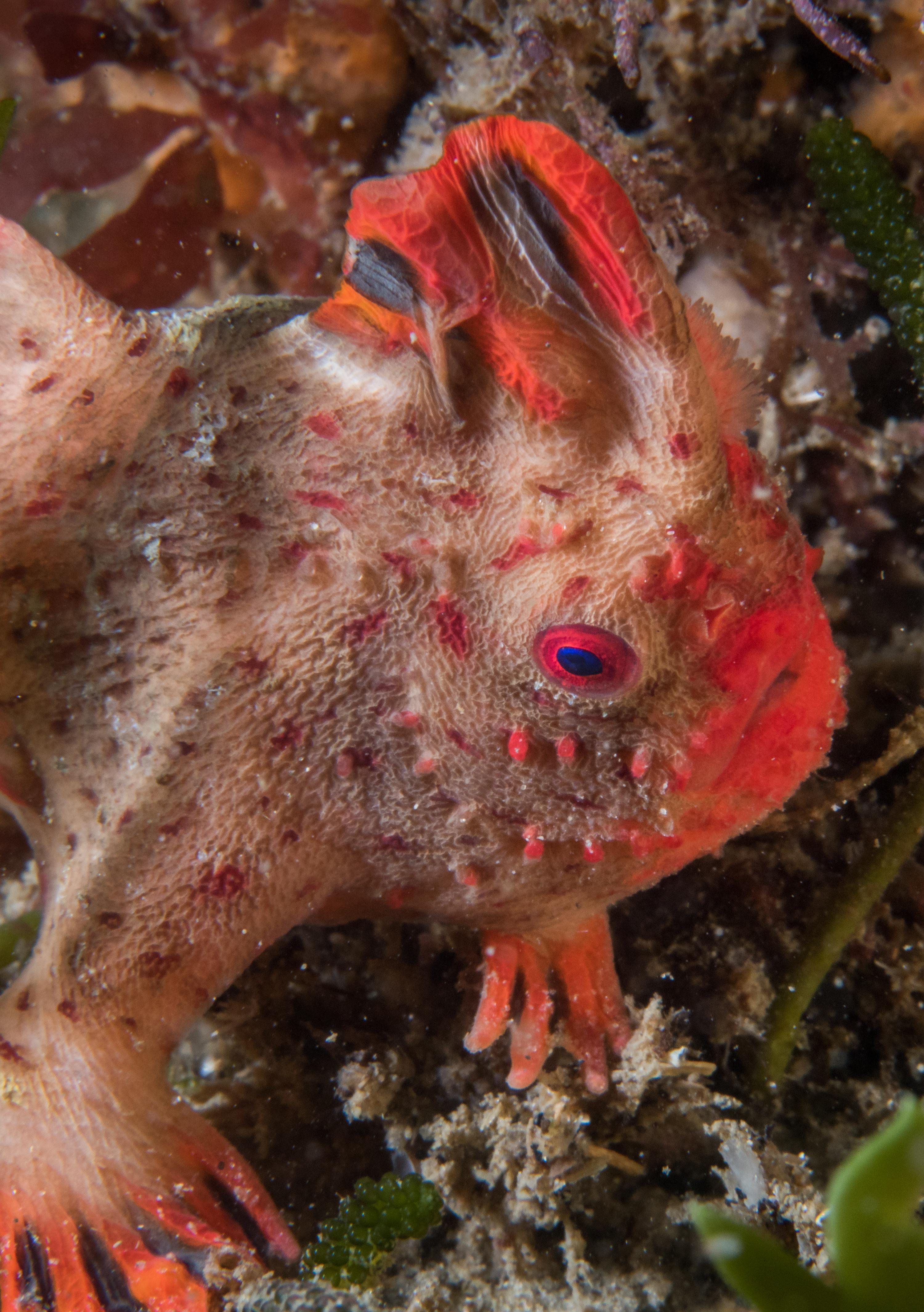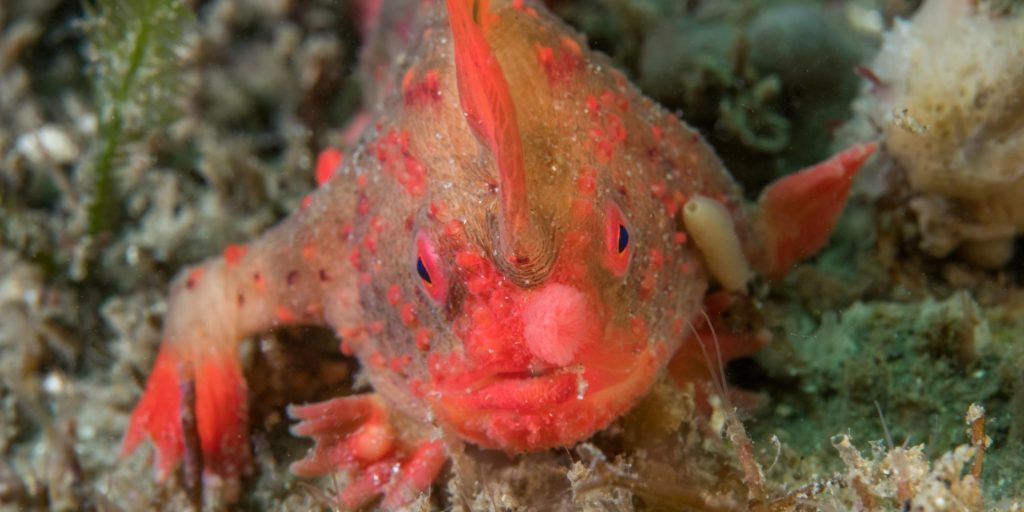Meet the red handfish.
Others are reading now
Imagine a tiny fish with hands for fins, a moody downturned mouth, and an extravagant mohawk.
What you are picturing is not a mythical creature but a real-life red handfish.
The red handfish—Thymichthys politus—is a rare anglerfish found exclusively on two small patches of reef off the coast of Tasmania, Australia.
It is not only unusual in appearance but also critically endangered, according to LiveScience.
Also read

This anglerfish grows no more than 4 inches (10 centimeters) long and can appear in various shades of red, brown, and pink, often with brighter edges around its fins. Unique markings on each fish help researchers distinguish between them.
Unlike most fish, the red handfish lacks a swim bladder for buoyancy. Instead, it uses its pectoral fins, which have evolved into large “hands,” to walk along the seafloor.
“It’s an amazing curiosity of evolution,” said Andrew Trotter, leader of the red handfish conservation breeding project at the University of Tasmania’s Institute for Marine and Antarctic Studies (IMAS).
“While walking with fins is rare, some fish can even do this on land. The loss of a swim bladder is common among many benthic fish, as fine-tuned buoyancy control is no longer needed.”
Conservation Efforts and Challenges
Despite their odd appearance, the red handfish has captured the hearts of those working to save it.
“Of course you would have to say they are a bit cute,” Trotter added.
These fish are highly vulnerable due to their limited range and inability to move far, making them susceptible to habitat loss, pollution, and urban development.
“The red handfish is probably in the rarest ‘handful’ of fish in the world, no pun intended,” Trotter noted. “It’s really hard to know exact numbers, but it has to be right up there with the most imperiled fish species that we know of.”
In a bid to protect them, researchers recently took 25 of the 100 known wild specimens into captivity, fearing that marine heatwaves could wipe out the entire species.
Trotter, who cared for the captive fish, observed that some had standout personalities.
“One might call this ‘attitude,'” he said.
A Delicate Balance
Caring for these endangered animals was stressful, Trotter admitted.
Despite their best efforts, three of the captive fish died. However, 18 were successfully returned to the wild once the heatwaves subsided, and the remaining four are now part of IMAS’s captive breeding program aimed at protecting the species’ future.
Yet, their survival is still uncertain.
“When you have so few animals left in one place, it seems likely an extreme event could lead to extinction,” Trotter warned.


